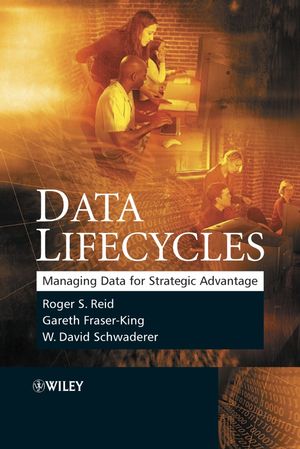Data Lifecycles: Managing Data for Strategic AdvantageISBN: 978-0-470-01633-6
Hardcover
268 pages
January 2007
 |
||||||
Who should read this book.
Purpose of this book.
1 Introducing Utility Computing.
1.1 Real problems and real solutions.
1.2 New storage management.
2 The Changing IT Imperative.
2.1 Introduction to utility computing.
2.2 General market highlights.
2.3 Real challenges and opportunities.
2.4 Summary.
3 Being Compliant.
3.1 So what are the regulations?
3.2 Financial services companies.
3.3 Telecommunications companies.
3.4 Utilities companies.
3.5 Public authorities and government.
3.6 Managing data for compliance is just a specialised form of data management.
3.7 Just plain junk data!
3.8 The bottom line–what is mandated?
4 Data Taxonomy.
4.1 A new data management consciousness level.
4.2 Data personification.
4.3 Classification model and framework.
4.4 Customer reporting.
4.5 Summary.
5 Email Retention.
5.1 Email management to achieve compliance.
5.2 What is archiving?
5.3 How should organisations manage their email records?
5.4 Email retention policies are for life–not just for Christmas.
5.5 How companies can gain competitive advantage using compliance.
5.6 What laws govern email retention?
5.7 Write once, secure against tampering.
5.8 Storage recommendations for email.
5.9 Conclusion.
6 Security.
6.1 Alerting organisations to threats.
6.2 Protecting data and IT systems.
6.3 Conclusions.
Reference.
7 Data Lifecycles and Tiered Storage Architectures.
7.1 Tiered storage defined.
7.2 RAID review.
7.3 Tape-based solutions.
7.4 Recoverability of data: you get what you pay for.
7.5 Conclusion.
Bibliography.
Recommended Reading.
8 Continuous Data Protection (CDP).
8.1 Introduction.
8.2 CDP data-taps.
8.3 CDP operations.
8.4 Conclusion.
9 What is the Cost of an IT Outage?
9.1 Failure is not an option.
9.2 Finding the elusive ROI.
9.3 Building a robust and resilient infrastructure.
9.4 Conclusion–Analysing business impact.
10 Business Impact.
10.1 Business impact.
10.2 The paradigm shift in the way IT does business.
10.3 The Holy Grail: standard software platform.
10.4 Summary.
Bibliography.
11 Integration.
11.1 Understanding compliance requirements.
11.2 Understanding hardware and its constructions.
11.3 Understanding user expectations.
11.4 Knowing the capabilities of your data management tools.
11.5 Solution integration–business data and workflow applications.
11.6 A ten-point plan to successful DLM, ILM and TLM strategy.
11.7 Conclusion.
References.
Index.



